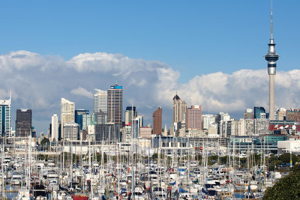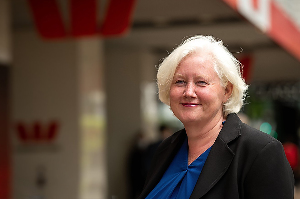
The latest Real Estate Institute of New Zealand data reveals New Zealand house prices rose by 6.2 percent in the July year — but Auckland suffered a 0.1 percent fall.
ASB said Auckland "continues to look more like a buyers’ market every month" The lender said: "We see a risk that annual house price growth in Auckland slips into negative territory as uncertainty and affordability constraints continue to crimp activity." The bank said it expected the overall market to remain "subdued".
Auckland prices slumped by 0.1% in the July year, due to the impact of LVR restrictions and curbs on property investors. The median price fell by $1000 however, compared to the previous year, holding steady at $835,000.
REINZ chief executive Bindi Norwell said: “The stability of Auckland’s median price will be welcome news for first time buyers struggling with Auckland’s house prices, but time will tell whether the low to mid $800,000 mark is a longer-term trend.”
The regions continue to drive house price increases. Excluding Auckland, New Zealand house prices rose by 8.6 percent in the July year, reaching a median price of $455,000, up from $419,000.
Four regions across the country enjoyed a record July. The strongest growth was seen in Taranaki, with a 15.4 percent rise, Nelson, up 15.2 percent, and Marlborough, up 13.4 percent year on year. Northland also enjoyed a strong run, up 5.7 percent.
Total July sale volumes revealed a slight increase. Volumes were up 0.7%, or 42 properties in total. In Auckland, the number of properties sold increased by 2.1%.
The regions saw the biggest increase in sale volumes. Sales in Southland were up 30.6 percent, Tasman up 28 percent, and Hawke’s Bay 8.8 percent. Yet Nelson, Gisborne, and Marlborough saw declines of 19.2 percent, 14.5 percent, and 12.2 percent respectively.
The REINZ House Price Index for New Zealand, which tracks the changing value of New Zealand property, jumped by 4.9% year-on-year to 2,722, a new record. Homes are getting more expensive. The number of homes sold for less than $500,000 fell from 47.8% of the total market in July 2017 to 42.4% of the market in July 2018.
Norwell said the figures highlighted the chronic shortage of New Zealand housing stock: “The shortage of properties available for sale across the country is continuing to push prices up in all regions across the country except for Auckland. With July producing another four regions with record median prices we desperately need to increase the supply of new houses – be that through KiwiBuild or from private developers and builders – in order to fill the significant shortage of properties around the country.”




Comments
No comments yet.
Sign In to add your comment